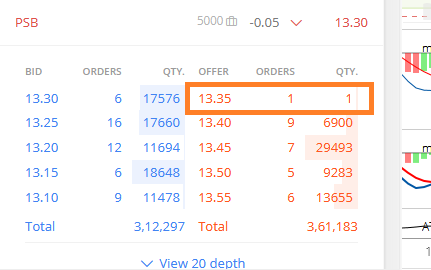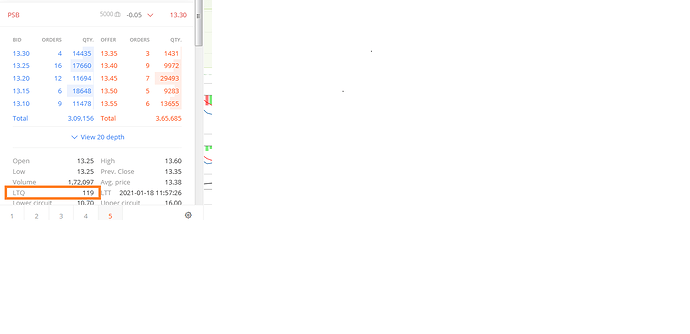This is one of those conspiracy theories that sounds really cool because of the terminology used but it has no basis in reality. It’s just another one of countless silly things tossed around by novice traders. Most traders have a habit of looking for reasons when a trade goes against them. It’s institutions, algos, big players, LIC or any number of other reasons that are constantly tossed around rather than accepting responsibility for a trade going wrong.
This reminds of this Inneworth post which is particularly apt here:
For a winning trade, it’s easy to explain the outcome with internal forces. We have a natural tendency to build ourselves up and enhance our ego when we win, so it makes us feel good when we do well and believe it is due to our talents and skills. But what about a losing trade? When we lose, it’s also due to our talents and skills, but in this case, it may be a lack of talent and skills. Such a possibility is harder to accept. When faced with a defeat, most people suddenly switch from looking for internal forces to looking for external forces: “The market conditions changed too quickly.
In India, as soon you place an order it hits the exchange where it’s matched. You can check your orderbook and you will see the unique order ID assigned by the exchanges. Unlike the US, where brokers can sell your order flows to firms like Citadel, this isn’t possible in India. So, if you placed a stop loss and it is hit, that means a stock or a contract traded at that price and your SL was hit. You can also verify these trades on the exchange.
Adding to this Nithin had written this here a while ago, but reposting this here since this silly and asinine topic keeps coming up:
This is one of those seemingly technical terms that is thrown around a lot but has no substance. This particular conspiracy theory was discussed on the TV panel mentioned earlier.
I have been in the business of trading and dealing with retail traders for two decades now. I’ve personally interacted with tens of thousands of traders in person, over e-mail, on online communities, and on our very active forums like TradingQ&A, Z-Connect, and Varsity. I can say with great certainty that the single biggest reason why retail traders lose money is by trading actively with no stop-loss to the trading strategy. Many claim to make a mental note of the stop-loss, but only a few actually place stop-loss orders. And the majority of those few who do, cancel or modify as the price starts closing in on the stop-loss. So, in reality, the significant majority never really have a real stop in place when trading. So if there is no stop, what can someone really “hunt”?
Secondly, over 80% of all trades today are on extremely liquid Nifty and Banknifty contracts. Assume Nifty is at 11010, and you get to know that at 10990 there are a lot of stop-loss orders. What can you do about it? Somehow magically take the market down by 20 points, fill those orders, and then take it back up? Even if someone did have deep enough pockets to move the price to a stop, how could this possibly be a profitable trading strategy in a market where there are lakhs of traders with different views, big and small, where no one person can control the direction of the market?
The only place where “stop-loss hunting” or forcing clients out of positions is profitable is again on a CFD / Binary trading platform, where the platform is the counterparty to every client position. The platform can potentially hit any manual stop in place or push the price to the extent where the risk management system auto squares off positions for insufficient margins. This is the reason why most of these platforms give extreme 100 to 200 times leverage to trade.
On a regulated exchange platform, this isn’t possible. Exchanges also have alert mechanisms that trigger anytime the buyer and seller on both entry and exit trades are the same clients. This immediately gets escalated and the broker is required to provide an explanation. There are severe penalties and regulatory ramifications for such activities.
Tick by Tick (TBT) feeds: Finally, stock exchanges provide what is called tick by tick (TBT) data feed where you can track every single order, trade, any modification happening on the exchange. This data contains details of trades and pending orders at the exchange level, across all brokers. So if someone did have a strategy like “stop-loss hunting”, trying to figure out retail orders, etc, the best option would be to subscribe to exchange TBT data feed. It’s quite complex and expensive, but available to anyone, and is offered by almost all Indian and global exchanges.



![What is Stop Loss Hunting ? 🏹[Live Example]](https://img.youtube.com/vi/RZCiSE3urkk/maxresdefault.jpg)